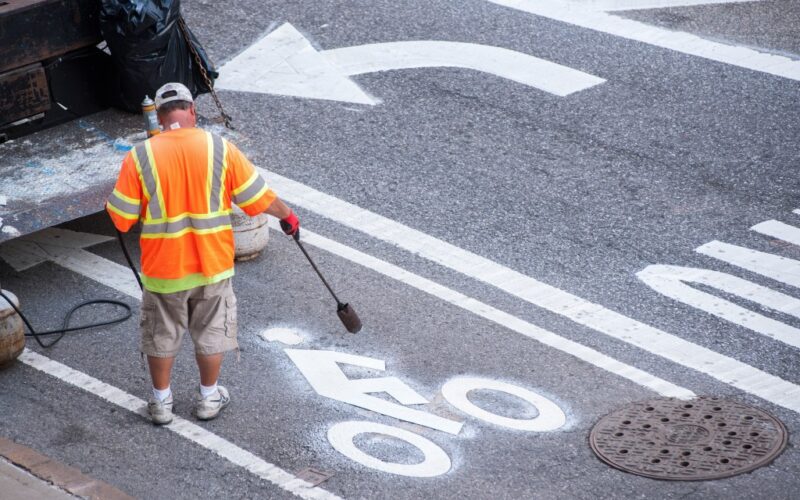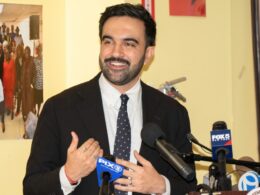Ambitious initiatives to make our streets work better for all New Yorkers are being stymied by the very officials that tout them. Mayor Adams needs to get out of the Department of Transportation’s way and let them do their job.
Two years ago, DOT unveiled an ambitious Curb Management Action Plan to make the space in between the travel lane and sidewalks work better for all New Yorkers, including drivers. Better curb management strategies, bus lanes, and bike lanes help drivers in the long run by reducing traffic, making our streets safer, and making parking more readily available.
The plan outlined 10 concrete goals to improve the management of our curbs. Last month, Open Plans released a progress report on the commitments made in the plan, finding that there has been real progress made and commitments kept, like more loading zones, public space, and trash containerization at the curb.
However, a recent rollback of a crucial part of the plan is just the latest in a series of self-inflicted barriers to progress by the mayoral administration.
The linchpin of the Department of Transportation’s Curb Management Action Plan is the Smart Curbs pilot hosted on the Upper West Side. In this pilot, DOT implemented tried-and-true curb management solutions while testing out new ones — strategies like expanded loading zones, microhubs, and more bike parking.
A vital part of the pilot was to shift some passenger paid parking for local business patrons to portions of side streets to make room for commercial parking on the main corridors. After more than a year of public outreach, which included mentions of this shift, DOT implemented the changes — a conversion of just 70 spaces. Immediately, there was backlash from some drivers in the community (less than 30% of Upper West Siders own cars), who complained to local Councilwoman Gale Brewer.
Brewer sent a letter to First Deputy Mayor Randy Mastro demanding the changes be reversed. And despite more than a year of outreach, and even more time spent planning, Adams simply forced DOT to reverse the changes.
Unfortunately, Adams standing in DOT’s way at the expense of pedestrians, transit riders, and cyclists isn’t new.
Throughout his tenure, Adams has continually claimed to be a champion of transit and pedestrians. Before being elected, he committed to creating 150 miles of bus lanes — which earned him the title “NYC Bus Mayor”— and to creating 300 miles of bike lanes in his first four years in office (neither of which he is meeting).
He has proven to be anything but. The rollback on the Upper West Side is just the latest in a series of meddling with the Department of Transportation’s street projects to put car drivers above all other users of our streets.
Tremont Ave. in the Bronx is home to the Bx36, the fifth-busiest bus route in the borough. A busway was planned to keep the route moving. After community outreach, planning, and even the creation of a brochure to explain the changes, DOT shared that the busway would be installed as soon as March of this year. It never materialized. In August, it was revealed that the administration had shelved the busway; Adams’ City Hall had given a “hard red light” on the plan.
In the case of several bike lanes, projects have been cancelled, truncated, or even ripped out of the ground. The Adams administration ripped out a portion of the Bedford Ave. protected bike lane under the cover of night, forcing cyclists into the street. In Crown Heights, a planned bike lane on a dangerous corridor was scaled back. And in Southern Brooklyn, plans were scrapped to connect the bike network to the area despite the dearth of infrastructure.
And all four of these instances happened in just the last few months.
DOT is by no means perfect. No government agency is. But with a mayor that so easily capitulates to car owners at the expense of the majority of New Yorkers, what else can we expect? We need a mayor who will empower DOT and allow them to make our city’s streets work better for everyone.
New York is a city of transit riders and pedestrians, and our streets should be oriented towards them. Whoever is the new mayor next year must operate with those principles, not just platitudes. Let’s let the Department of Transportation get to work.
Sutherland is the senior policy and legislative analyst at Open Plans, a nonprofit advocacy organization that works to make New York City’s public spaces more livable and safer.








